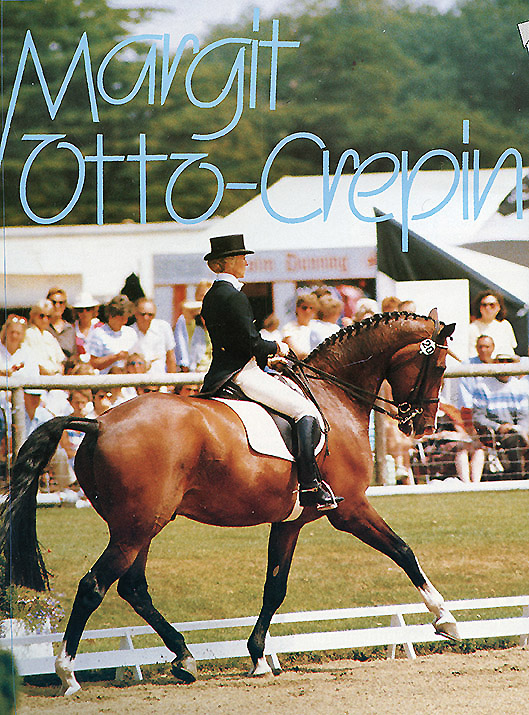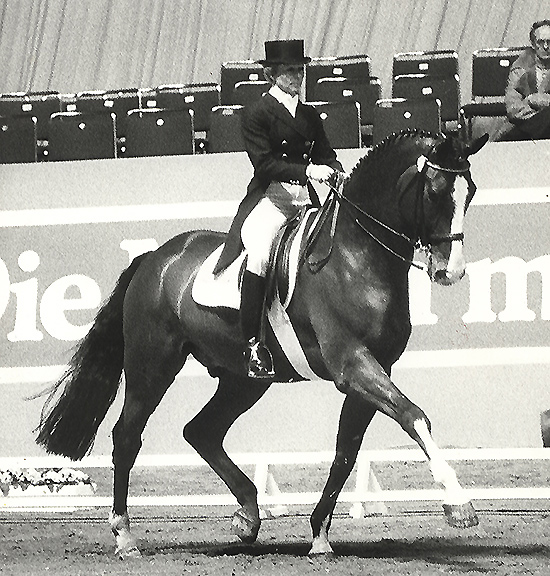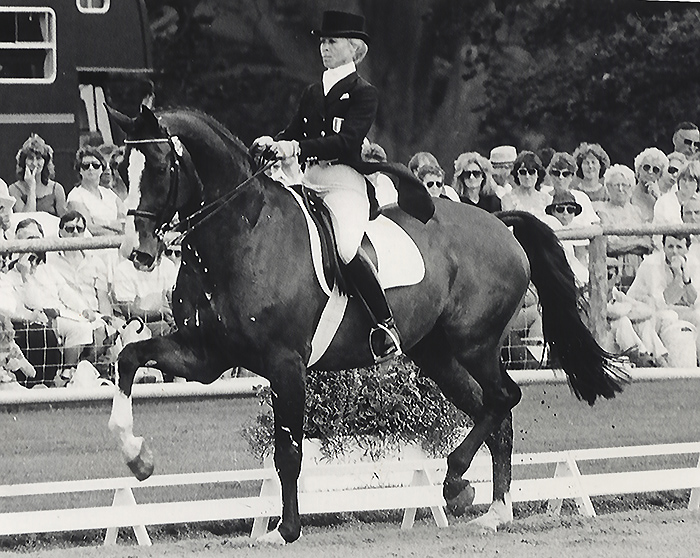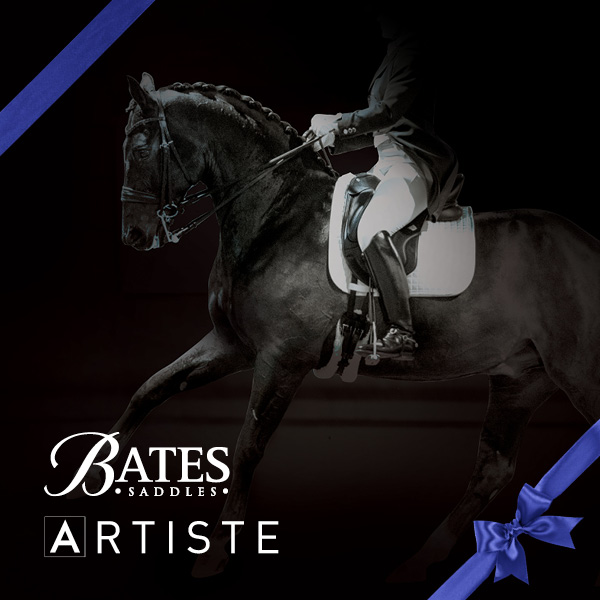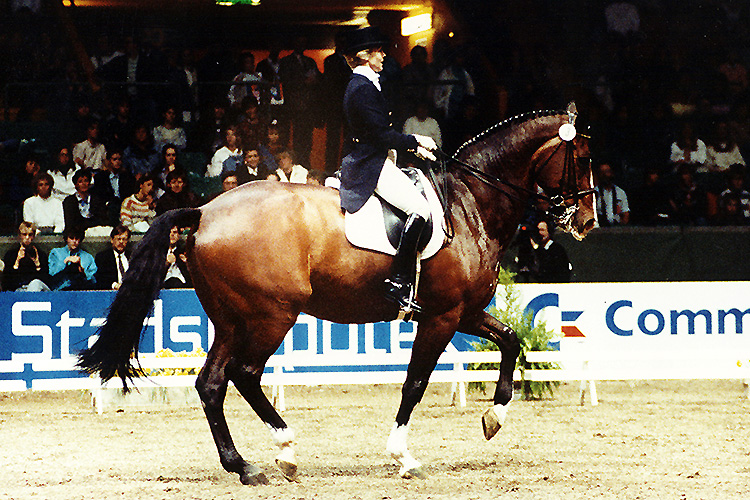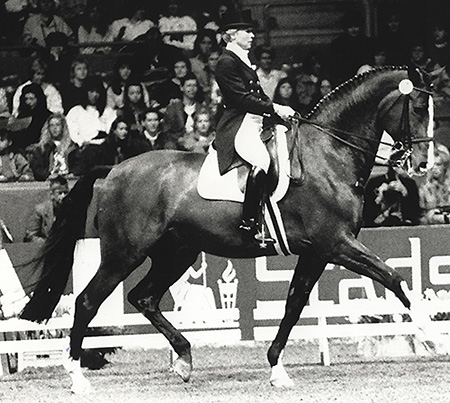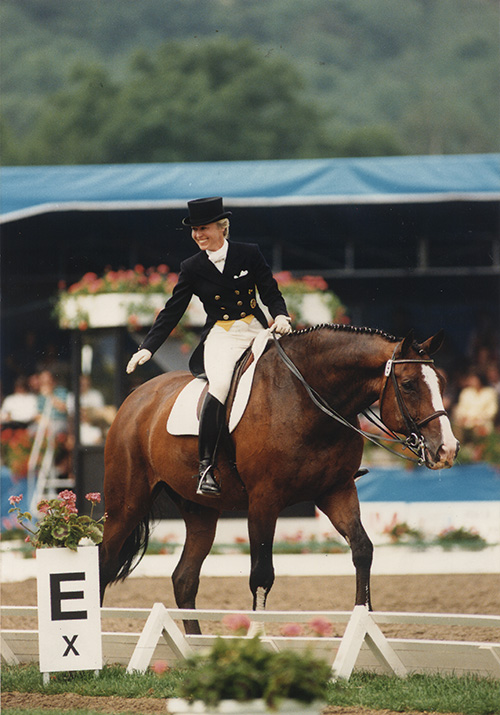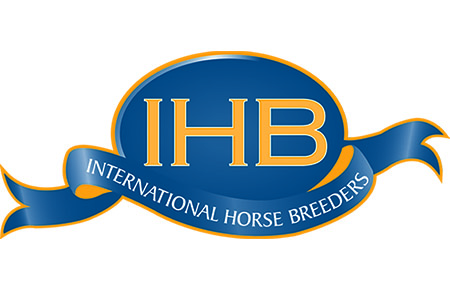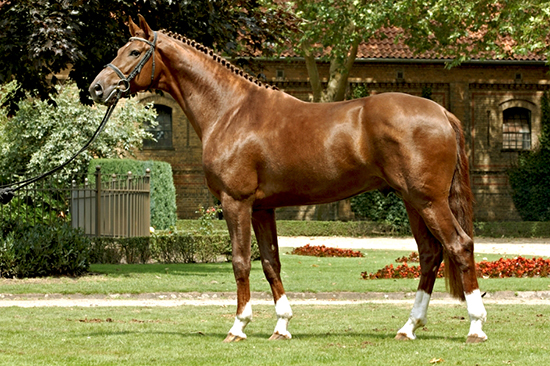Back in 1987, Margit Otto Crepin was the new star of the dressage world. With Corlandus she was European Champion, individual silver medallist at the 1988 Olympics and World Cup champion in 1989 The late Pegotty Henriques, who was the doyen of British dressage journalists at the time, interviewed her for THM. Here’s Pegotty’s interview:
images Werner Ernst and Ros Neave
Hours before she became the new European Champion I joined Margit for breakfast and we talked about Corlandus, and her riding philosophies.
She explained that she likes to buy horses at three and with the help of Herr van Laak, her rider and trainer, brings them on and keeps only the very best. Margit trained with Templemann, as did Herbert van Laak. They now work together and he often rides Corlandus for her, understanding the horse and his temperament as fully as does Margit.
Corlandus and Margitt starting out
“When she talks of Corlandus, her eyes sparkle and she becomes more eloquently French as she bubbles with enthusiasm for the horse she says is unique:
“He is the horse of an era. To own such a horse is the most wonderful thing. He is like riding nothing else. I feel so dissatisfied when I am on other horses. Yet the feel he gives to me, helps me, to make the other horses better. He is an inspiration.”
As Margit talked I realized that despite her adoration of Corlandus, he cannot be an easy horse to train. He has tremendous spirit and a very dominant character that demands attention… he is furious when other horses in the yard are being looked after if no one is at his door. He has power and strength, both physical and mental and expresses his opinions with exuberant leaps in the air that must be violently unseating. He is never punished for those outbursts however, they are almost encouraged for Margit is determined to keep the freshness in the horse’s performance.”
After competition he always has a couple of days at rest, he has exhausted himself and everyone else as well with his demanding behaviour. Then when Margit begins to ride him again she takes him very gently and forces nothing.
more follows
“I ask him, what do you feel like doing? Maybe just walk. Sometimes he stays in this mood for two or three days, then when he is feeling ready to really work he will give one of his mighty kick ups and that is his sign that he is ready for more training!”
Margit is adamant that she never rides test movements and likes to vary his work as much as possible. Though she enjoys competition, Margit will only compete in a few shows a year so that Corlandus stays happy to compete. The way he demands everyone’s attention is exhausting to keep up with. He knows he is the centre of attention and has every intention of keeping things that way.
Despite her highly feminine appearance, I suspect that Margit’s character is just as determined and strong as that of Corlandus. She is not always happy about the way she is judged and doesn’t understand why, when something is really good, tens are not awarded:
“If I get a ten it is only from one judge, never altogether. I have asked judges who have given me a nine, ‘why not ten?’ and they have said they don’t really know why. It is a pity.”
Margit was also concerned that some judges marked the mechanically obedient rather than the fundamentally correct, and her great hope for the future was that judges would develop a little more courage.
Not averse to flirting light heartedly with the judges, Margit admits that she likes to win, but is adamant that she looks for beauty in her horse’s performance more than wins.”
I don’t like to win when I have a bad ride and a bad feel. I prefer to have a good feeling rather than win. Best of all I like to win with a good feeling. That is wonderful and what dressage is all about for me.
“Watching Margit work in Corlandus before the European Championships was fascinating. She works in like no other rider. She is intent on what she is doing despite the fact that she does more walk than anything else; using simple suppling exercises, then short, soft, collected trot work again gently developing the lateral suppleness.”
A tremendous amount of time is spent on this simple work, but she quietly builds up to preparing the horse for all the Grand Prix movements and one morning I watched her produce some of the most superb piaffe imaginable. The quarters lowered, the back remaining soft and the steps of the fore and hind legs being raised in absolute accordance with classical principles. The life and elasticity shown were a wonderful expression of the horse’s state of mind, fresh and alive. There were his occasional leaps into the air that took him half way across the practice arena yet almost instantly he returned to a state of lightness and balance.
In her training, Margit works her horse like a gymnast.
“I do not demand exercises, I want an athlete,” she told me.
At the end of a training or working-in session, it is back to the quietness and relaxation of the walk and a gentle trot. She believes that ‘the last ten minutes are for the mind’ and takes time to unwind her own and her horse’s mental state.”
Corlandus is now eleven years old and came into Margit’s hands as a seven year old, already working at S level but showing neither piaffe nor passage. He was sold as a young horse to the Holstein Verband and finally came to Margit from Peter Mohr.
Despite his great size, Corlandus has an elegance that probably comes from his Selle Français, half Thoroughbred sire, Cor de la Bryere. His dam is Holstein by Landgraf.
Margit and her trainer spend as much time thinking about the horse’s mind as they do about his physical well-being. There is much devotion from all those around him.
With her delicate, slight physique it is remarkable that Margit can ride this horse, but there is a true understanding between them. This feeling of understanding is not just magic, it doesn’t just happen, it is something that is always at the forefront of her conscious mind and something she constantly works on.
“I have my own way I feel about dressage, it is personal, to me and my horse. My horse must be light, he has to be with me not against me. I don’t like to hold or drive.”
As I watched her triumphantly competing on that final idyllic afternoon at Goodwood, watched her claim the European Dressage crown, the words she spoke came again into my mind: “I look for beauty, not wins.” On that Sunday afternoon, those who watched knew that she achieved them both.
Breeding your own dressage star? Select from the range of top European Bloodlines available in Australia from www.ihb.com.au
Like Vitalis, plus a great range of other top European stallions to choose from…

